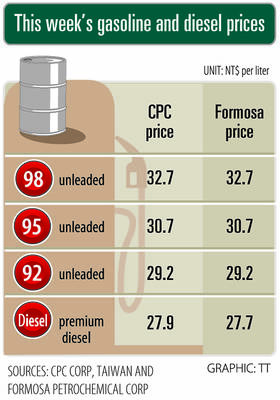The NASDAQ Composite Index skidded lower for the third week in a row, but this time it took the rest of the market down with it.
The NASDAQ slumped 128 points (3.10 percent) to 3,999.73 this week, while the Dow Jones Industrial Average and the S&P 500 joined the tech-rich index in the red after both avoided major falls the past two weeks.
The Dow shed 385.96 (2.35 percent) to 16,026.75, while the broad-based S&P 500 lost 49.40 (2.65 percent) to 1,815.69 over the week.
The broadening pain in the market has deepened talk that a pullback sparked by the overvaluation of high-flying technology and biotechnology names has morphed into an overall market correction.
Tech names had an especially ugly end to the week. Since Wednesday’s close, Pandora Media Inc sank 15 percent, biotechnology company Celgene Corp fell 7.1 percent, Amazon.com Inc shed 6.1 percent and Netflix Inc lost 7.5 percent.
However, other sectors also took a hit, with JPMorgan Chase losing 6.7 percent over the 48-hour stretch from Wednesday after being weakened by a disappointing earnings report, Macy’s sliding 3.3 percent and Visa Inc shedding 5.3 percent.
“In previous weeks, it didn’t really go into the broader market,” Wunderlich Securities chief market strategist Art Hogan said of the declines. “When the trend broadens to the overall market, I tend to be worried that it becomes self-fulfilling.”
FTN Financial chief economist Chris Low also said that investor psychology has deteriorated.
“People are always talking about a correction being necessary, but once the correction is under way, panic tends to set in. We seen to be at that panic point,” Low said.
Stocks had a muted reaction to Tuesday’s outlook from the IMF, which trimmed its forecast for global growth, but also alluded to a recovery that “is becoming not only stronger, but also broader.”
The following day, US stocks rallied after minutes from a US Federal Reserve policy meeting last month showed no support for an early rise in interest rates.
Stocks jumped more than 1 percent on Wednesday, with the NASDAQ leading the charge with a 1.7 percent surge, but sentiment shifted the next day, and the index suffered its steepest decline in two-and-a-half years as another wave of anxiety about tech sector overvaluation overtook the market.
Thursday’s drop came on the heels of last moth’s trade data from China, which showed that imports fell 11.3 percent and exports by 6.6 percent. Low said the weak data was a factor in stocks’ late-week swoon.
According to Low, less-discussed factors behind the retreat include a rise in healthcare costs due to the new healthcare law and the need of many investors to sell stocks to pay higher capital gains taxes following the stock market’s surge last year.
Many market watchers believe a correction is neither surprising nor worrisome given how far stocks have risen since the financial crisis — the S&P 500 rose nearly 30 percent last year.
Wells Fargo Advisors senior equity strategist Scott Wren is urging clients to take the dip as a buying opportunity. His firm projects that the S&P 500 will close the year in the 1,975 to 2,025 range.
“I think there is probably a little more downside” to stocks in the near term, Wren said. “I don’t think there’s a lot.”
Next week’s agenda includes releases on last month’s retail sales and housing starts, as well as the publication of the Fed’s Beige Book.
The earnings calendar also picks up with reports from major firms such as Citigroup Inc, Coca-Cola Co, General Electric Co and Google Inc.

Hon Hai Precision Industry Co (鴻海精密) yesterday said that its research institute has launched its first advanced artificial intelligence (AI) large language model (LLM) using traditional Chinese, with technology assistance from Nvidia Corp. Hon Hai, also known as Foxconn Technology Group (富士康科技集團), said the LLM, FoxBrain, is expected to improve its data analysis capabilities for smart manufacturing, and electric vehicle and smart city development. An LLM is a type of AI trained on vast amounts of text data and uses deep learning techniques, particularly neural networks, to process and generate language. They are essential for building and improving AI-powered servers. Nvidia provided assistance

GREAT SUCCESS: Republican Senator Todd Young expressed surprise at Trump’s comments and said he expects the administration to keep the program running US lawmakers who helped secure billions of dollars in subsidies for domestic semiconductor manufacturing rejected US President Donald Trump’s call to revoke the 2022 CHIPS and Science Act, signaling that any repeal effort in the US Congress would fall short. US Senate Minority Leader Chuck Schumer, who negotiated the law, on Wednesday said that Trump’s demand would fail, while a top Republican proponent, US Senator Todd Young, expressed surprise at the president’s comments and said he expects the administration to keep the program running. The CHIPS Act is “essential for America leading the world in tech, leading the world in AI [artificial

DOMESTIC SUPPLY: The probe comes as Donald Trump has called for the repeal of the US$52.7 billion CHIPS and Science Act, which the US Congress passed in 2022 The Office of the US Trade Representative is to hold a hearing tomorrow into older Chinese-made “legacy” semiconductors that could heap more US tariffs on chips from China that power everyday goods from cars to washing machines to telecoms equipment. The probe, which began during former US president Joe Biden’s tenure in December last year, aims to protect US and other semiconductor producers from China’s massive state-driven buildup of domestic chip supply. A 50 percent US tariff on Chinese semiconductors began on Jan. 1. Legacy chips use older manufacturing processes introduced more than a decade ago and are often far simpler than

Gasoline and diesel prices this week are to decrease NT$0.5 and NT$1 per liter respectively as international crude prices continued to fall last week, CPC Corp, Taiwan (CPC, 台灣中油) and Formosa Petrochemical Corp (台塑石化) said yesterday. Effective today, gasoline prices at CPC and Formosa stations are to decrease to NT$29.2, NT$30.7 and NT$32.7 per liter for 92, 95 and 98-octane unleaded gasoline respectively, while premium diesel is to cost NT$27.9 per liter at CPC stations and NT$27.7 at Formosa pumps, the companies said in separate statements. Global crude oil prices dropped last week after the eight OPEC+ members said they would